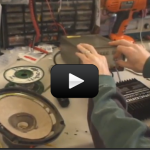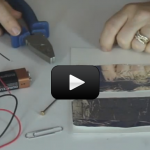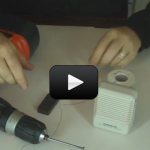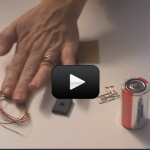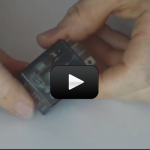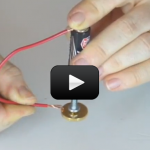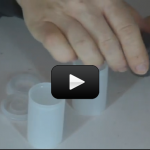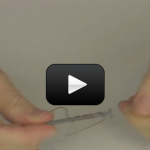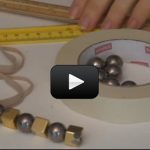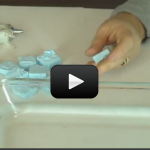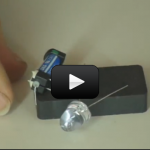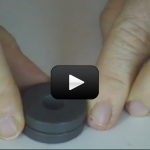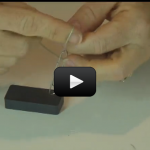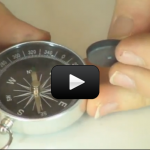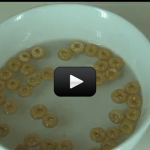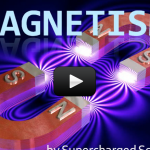Building Speakers
Alexander Graham Bell developed the telegraph, microphone, and telephone back in the late 1800s. We’ll be talking about electromagnetism in a later unit, but we’re going to cover a few basics here so you can understand how loudspeakers transform an electrical signal into sound. This experiment is for advanced students.We’ll be making different kinds of … Continue reading "Building Speakers" |
Rail Accelerator
We’re going to build on the quick ‘n’ easy DC motor to make a tiny rail accelerator (any larger, and you’ll need a power plant and a firing range and a healthy dose of ethics.) So let’s stick to the physics of what’s going on in this super-cool electromagnetism project. This project is for advanced … Continue reading "Rail Accelerator" |
Hearing Magnetism
Want to hear your magnets? We’re going to use electromagnetism to learn how you can listen to your physics lesson, and you’ll be surprised at how common this principle is in your everyday life. This project is for advanced students. We’re going to invert the ideas used when we created our homemade speakers into a … Continue reading "Hearing Magnetism" |
Homemade DC Motor
Imagine you have two magnets. Glue one magnet on an imaginary record player (or a ‘lazy susan’ turntable) and hold the other magnet in your hand. What happens when you bring your hand close to the turntable magnet and bring the north sides together? The magnet should repel and move, and since it’s on a … Continue reading "Homemade DC Motor" |
Relays & Homemade Shockers
This experiment is for advanced students. If you’ve attempted the relay and telegraph experiment, you already know it’s one of the hardest ones in this unit, as the gap needs to be *just right* in order for it to work. It’s a super-tricky experiment that can leave you frustrated and losing hope that you’ll ever … Continue reading "Relays & Homemade Shockers" |
Quick ‘n’ Easy DC Motor
Find a spare magnet – one you really don’t care about. Bring it up close to another magnet to find where the north and south poles are on the spare magnet. Did you find them? Mark the spots with a pen – put a N for north, and a S for south. Now break the … Continue reading "Quick ‘n’ Easy DC Motor" |
How Generators Work
Have you noticed that stuff sticks to your motor? If you drag your motor through a pile of paperclips, a few will get stuck to the side. What’s going on? Inside your motor are permanent magnets (red and blue things in the photo) and an electromagnet (the copper thing wrapped around the middle). Normally, … Continue reading "How Generators Work" |
Electromagnet
After you’ve completed the galvanometer experiment, try this one! You can wrap wire around an iron core (like a nail), which will intensify the effect and magnetize the nail enough for you to pick up paperclips when it’s hooked up. See how many you can lift! You can wrap the wire around your nail using … Continue reading "Electromagnet" |
Galvanometers
Galvanometers are coils of wire connected to a battery. When current flows through the wire, it creates a magnetic field. Since the wire is bundled up, it multiplies this electromagnetic effect to create a simple electromagnet that you can detect with your compass. |
Ferrofluid
A ferrofluid becomes strongly magnetized when placed in a magnetic field. This liquid is made up of very tiny (10 nanometers or less) particles coated with anti-clumping surfactants and then mixed with water (or solvents). These particles don’t “settle out” but rather remain suspended in the fluid. The particles themselves are made up of either … Continue reading "Ferrofluid" |
Linear Accelerator
There are two ways to create a magnetic field. First, you can wrap wire around a nail and attach the ends of the wire to a battery to make an electromagnet. When you connect the battery to the wires, current begins to flow, creating a magnetic field. However, the magnets that stick to your fridge … Continue reading "Linear Accelerator" |
Curie Heat Engine
Magnetic material loses its ability to stick to a magnet when heated to a certain temperature called the Curie temperature. The Curie temperature for nickel is 380 oF, iron is 1,420oF, cobalt is 2,070 oF, and for ceramic ferrite magnets, it starts at 860oF. We’re going to heat a magnet so that it loses temporarily … Continue reading "Curie Heat Engine" |
Magnet Boats
We took our first step into the strange world of magnetism when we played with magnetizing a nail. We learned that magnets do what they do because of the behavior of electrons. When a bunch of those crazy little guys get going in the same direction they create a magnetic field. So what’s a magnetic … Continue reading "Magnet Boats" |
Magnetic Sensors
Wouldn’t it be cool to have an alarm sound each time someone opened your door, lunch box, or secret drawer? It’s easy when you use a reed switch in your circuit! All you need to do it substitute this sensor for the trip wire and you’ll have a magnetic burglar alarm. The first thing you … Continue reading "Magnetic Sensors" |
Magnetic Fields
This is a quick and simple experiment to answer the question of magnetic field strength: Do four magnets have a stronger magnetic pull than one? You’ll find the answer quite surprising… which is: it depends. Here’s what you need to do to see for yourself: |
Bouncing Magnets
Want to see a really neat way to get magnetic fields to interact with each other? While levitating objects is hard, bouncing them in invisible magnetic fields is easy. In this video, you’ll see how you can take two, three, or even four magnets and have them perform for you. Are you ready? Materials: 3 … Continue reading "Bouncing Magnets" |
Flying Paper Clip
Have you ever been close to something that smells bad? Have you noticed that the farther you get from that something, the less it smells, and the closer you get, the more it smells? Well forces sort of work in the same way. Forces behave according to a fancy law called the inverse-square law. To … Continue reading "Flying Paper Clip" |
Which way is North?
I can still remember in 2nd grade science class wondering about this idea. And I still remember how baffled my teacher was when I asked her this question: “Doesn’t the north tip of a compass needle point to the south pole?” Think about this – if you hold up a magnet by a string, just … Continue reading "Which way is North?" |
Maxwell’s Second Equation
Maxwell’s Second Equation: All magnets have two poles. Magnets are called dipolar which means they have two poles. The two poles of a magnet are called north and south poles. The magnetic field comes from a north pole and goes to a south pole. Opposite poles will attract one another. Like poles will repel one … Continue reading "Maxwell’s Second Equation" |
Force-full Cereal
Did you know that your cereal may be magnetic? Depending on the brand of cereal you enjoy in the morning, you’ll be able to see the magnetic effects right in your bowl. You don’t have to eat this experiment when you’re done, but you may if you want to (this is one of the ONLY … Continue reading "Force-full Cereal" |
Special Science Teleclass: Magnetism
This is a recording of a recent live teleclass I did with thousands of kids from all over the world. I’ve included it here so you can participate and learn, too! Discover how to detect magnetic fields, learn about the Earth’s 8 magnetic poles, and uncover the mysterious link between electricity and magnetism that marks … Continue reading "Special Science Teleclass: Magnetism" |

